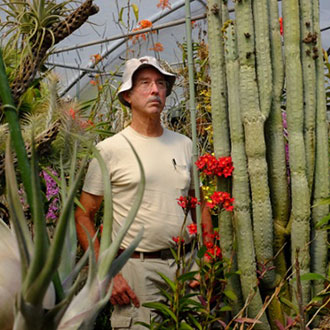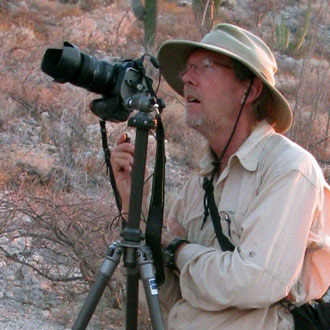
Photo by Keegam Shamlian for The Guardian
This is a text version of an interview with Sarah Clark who is documenting the 6&6 project in audio and video.
What is your role in the 6&6 Initiative and why did you decide to participate?
My role is to contribute botanical/ecological expertise to an art project. I accepted the invitation to join the 6&6 group because of my admiration of the Next Generation Sonoran Desert Researchers network and my deep respect for two of its founders, Ben Wilder and Taylor Edwards. I’ve known Ben since he was a student at the UofA, and Taylor since he was a keeper at the Arizona-Sonora Desert Museum long before he entered graduate school. Both of them are exceptionally bright scientists and enthusiastic researchers. I am excited to watch their careers take off as mine is winding down, and want to help them in any way I can.
What is the value of collaborating across the arts and sciences?
Science is the primary reason for human prosperity. Nearly all of the technologies that make our lives better, from smart phones to the internet to our abundant food supply to effective health care, result from the direct application of scientific knowledge. And by extension, most of our economy is driven by these advances. But the vast majority of Americans are scientifically illiterate, and in fact there is a strong and growing anti-science attitude. Most scientists are incompetent at communicating with the general public. We were taught to present our knowledge in formal, strictly factual and analytical, technical language that is in fact quite boring. The aim of the artist is exactly the opposite: it’s to inspire.
When I was writing my chapters for the first edition of A Natural History of the Sonoran Desert, I was lucky to have Gary Nabhan as a mentor. As both a scientist and artist, he understands the importance of communicating scientific knowledge to the public, and is an expert at doing that. He advised me not to start with the dry facts about species or ecosystems, but to begin with a story to capture the readers’ interest. That advice has greatly improved my communication skill.
I hope that the 6&6 project will create some beautiful, inspiring exhibits that also impart some useful knowledge about our natural world. First capture their interest, then help them understand.
What personal and/or professional qualities do you hope to deepen or expand through your participation in 6&6?
I have no expectations for this project. I’ve entered it with a blank open mind and will see what develops.
I have known a number of artists in my life, but have never worked closely with one. But having become aware that there is more than one way to view a subject, I hope to gain insight into how artists view the world differently from my scientific perspective. I have also observed that a number of scientists have become more artistic and philosophical late in their careers. I want to experience such a transformation myself.
What would you like to communicate to members of your own profession (i.e., other artists or scientists) about the 6&6 Initiative?
Too early to say. Perhaps that the factual/rational and the aesthetic/spiritual are not mutually exclusive realms of human experience.

